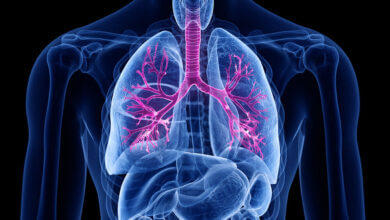Surviving 4th Degree Burns: A Journey to Recovery & Healing

Among different degrees of burn injuries, the 4th degree burn is considered to be the most severe. These burns penetrate through all layers of the skin and affect the underlying muscle, tendon, and bone. Getting immediate medical attention and going through a time taking and difficult recovery period are very important for someone to survive 4th degree burns.
In this article, we will discuss the causes and symptoms of 4th degree burns, the medical treatment process, and the emotional toll that accompanies these injuries. In addition, we will also explore how individuals can adjust to a new normal after suffering from a 4th degree burn injury, and the importance of prevention strategies in avoiding such injuries.
Related article:
What Personal Injury Lawyers do? Everything you need to know
By understanding the severity and complexity of 4th degree burns, we can better appreciate the physical and emotional toll they take on individuals, and how to support those who have experienced them.
Causes and Symptoms of 4th Degree Burns
Burn injuries can be classified into several degrees, with the most severe being the 4th degree. Such injuries occur when there is exposure of the skin and underlying tissues to immense heat, electricity, radiation or hazardous chemicals. These burns can have life-threatening consequences and require immediate medical attention.
The most common cause of 4th degree burns is exposure to fire or flames. These burn injuries can happen in various places, including residential areas, work environments, and public spaces. Electrical burns are another common cause of 4th degree burns, and they occur when the skin comes into contact with an electrical current.
Severe chemical burns can lead to 4th degree burns, especially when the skin is exposed to potent acids or alkalis that result in profound damage to the underlying tissues. Exposure to extreme cold can also cause 4th degree burns, as prolonged exposure to cold temperatures can damage the skin and underlying tissue.
Related article:
Beyond borders | The lifesaving work of Doctors Without Borders
Symptoms of 4th degree burns are severe and can include charred skin, exposed bone or muscle, and loss of sensation. The burn site may appear black, brown, or white, and the skin may appear dry and leathery. Individuals who have suffered from 4th degree burns may experience intense pain, which can be difficult to manage. In some cases, individuals may not feel any pain due to nerve damage caused by the burn.
Treatment and Recovery Process of 4th Degree Burns
The treatment and recovery process of 4th degree burns can be lengthy and challenging. Treatment typically begins with first aid measures to prevent further tissue damage and control pain. This may involve cooling the burn with running water, removing any clothing or jewelry from the affected area, and covering the burn with a clean, dry bandage.
In cases of severe burns, hospitalization is often necessary to manage the injury and prevent infection. Debridement is a potential treatment for burn injuries, where the damaged or dead tissue is removed to facilitate healing. Skin grafting may also be needed to promote recovery, which involves transplanting healthy skin from one part of the body to the burn site.
Recovery from 4th degree burns can be a long and difficult process. The burn site may require ongoing care and dressing changes, and individuals may need physical therapy and rehabilitation to regain strength and mobility. Pain management is also a key component of the recovery process, and individuals may require medications or other therapies to manage pain.
Related article:
Keiser University | A Complete Guide
Coping with the Emotional Toll of 4th Degree Burns
Coping with the emotional toll of 4th degree burns can be a challenging and ongoing process for individuals who have suffered from this type of injury. The physical trauma of the burn can lead to a wide range of emotional responses, including anxiety, depression, and post-traumatic stress disorder (PTSD). Coping strategies and support from healthcare professionals, family, and friends can help individuals manage these emotional challenges and move forward in their recovery.
One of the most important coping strategies for individuals who have suffered from 4th degree burns is seeking mental health care and support. It may require seeking assistance from a trauma and post-traumatic stress disorder specialist, such as a therapist or counselor.
Therapy can provide individuals with tools and techniques for managing anxiety, depression, and other emotional symptoms related to their injury. Additionally, group therapy or support groups can offer individuals a safe space to connect with others who have experienced similar challenges and share experiences, coping strategies, and support.
Related article:
Another important coping strategy for individuals with 4th degree burns is self-care. This may require participating in activities that encourage stress relief and relaxation, such as exercise, meditation, or artistic and musical pursuits. It is also important for individuals to maintain healthy habits, such as getting enough sleep, eating a balanced diet, and avoiding substances like drugs and alcohol, which can exacerbate emotional symptoms.
Adjusting to a New Normal After Suffering 4th Degree Burns
Adjusting to a new normal after suffering from 4th degree burns can be a challenging and ongoing process. Individuals may experience changes in their physical abilities, emotional well-being, and overall sense of identity as a result of their injury. Coping strategies and support from healthcare professionals, family, and friends can help individuals navigate the challenges of adjusting to a new normal and move forward in their recovery.
One of the most important factors in adjusting to a new normal after 4th degree burns is setting realistic expectations and goals for recovery. This may involve working with a healthcare team to develop a comprehensive treatment and recovery plan that takes into account the individual’s physical abilities, emotional well-being, and overall goals for recovery. With realistic goals in place, individuals can focus on making progress and achieving milestones in their recovery.
Related article:
Pneumonectomy? Quality of life What patients need to know?
It is also important for individuals to be patient with themselves as they adjust to a new normal. This may involve accepting that physical and emotional recovery may take time, and that setbacks and challenges may occur along the way. In order to sustain a positive mindset and stay motivated during the process of recovery, individuals may benefit from cultivating self-compassion and acknowledging small triumphs.
Additionally, the support of family and friends can be crucial in assisting individuals with adapting to a new way of life following severe fourth-degree burns. Providing emotional support, offering practical assistance, and helping individuals stay engaged in social activities and hobbies can all help individuals maintain a sense of normalcy and purpose in their daily lives.
The Importance of Prevention from 4th Degree Burns
Preventing 4th degree burns is crucial because of the severity of the injury and the long-lasting physical and emotional impact it can have on individuals. The recovery process can be long, challenging, and expensive, with many individuals requiring ongoing medical care and rehabilitation. In some cases, individuals may also experience permanent scarring and disfigurement.
Prevention not only helps individuals avoid the physical and emotional trauma of 4th degree burns, but it also has broader societal benefits. Preventing burn injuries can reduce the burden on healthcare systems, decrease workplace accidents and injuries, and save lives. By promoting prevention strategies, such as workplace safety protocols and fire prevention education, we can create safer environments for ourselves and others, and reduce the incidence of 4th degree burns.
Conclusion
To summarize, 4th degree burns are severe injuries that require prompt medical attention and specialized treatment. The road to recovery may be challenging, but with the right support and coping strategies, individuals can regain their physical and emotional well-being and begin to adjust to a new normal.
Prevention is key in avoiding such injuries, and it is important to remember that healing from a 4th degree burn is a journey that requires patience, resilience, and support. With the right resources and care, individuals can rebuild their lives and regain a sense of normalcy and purpose.






